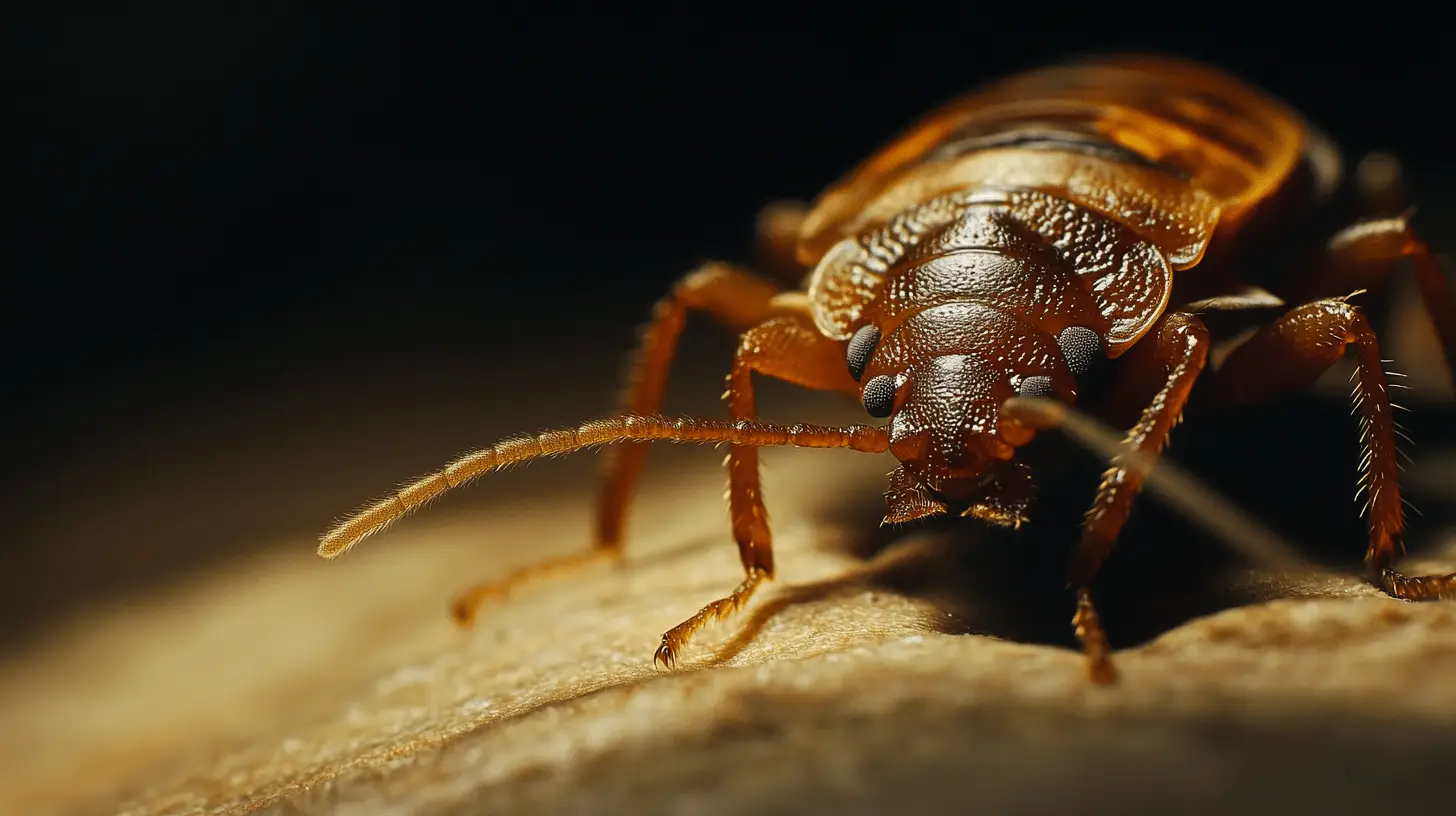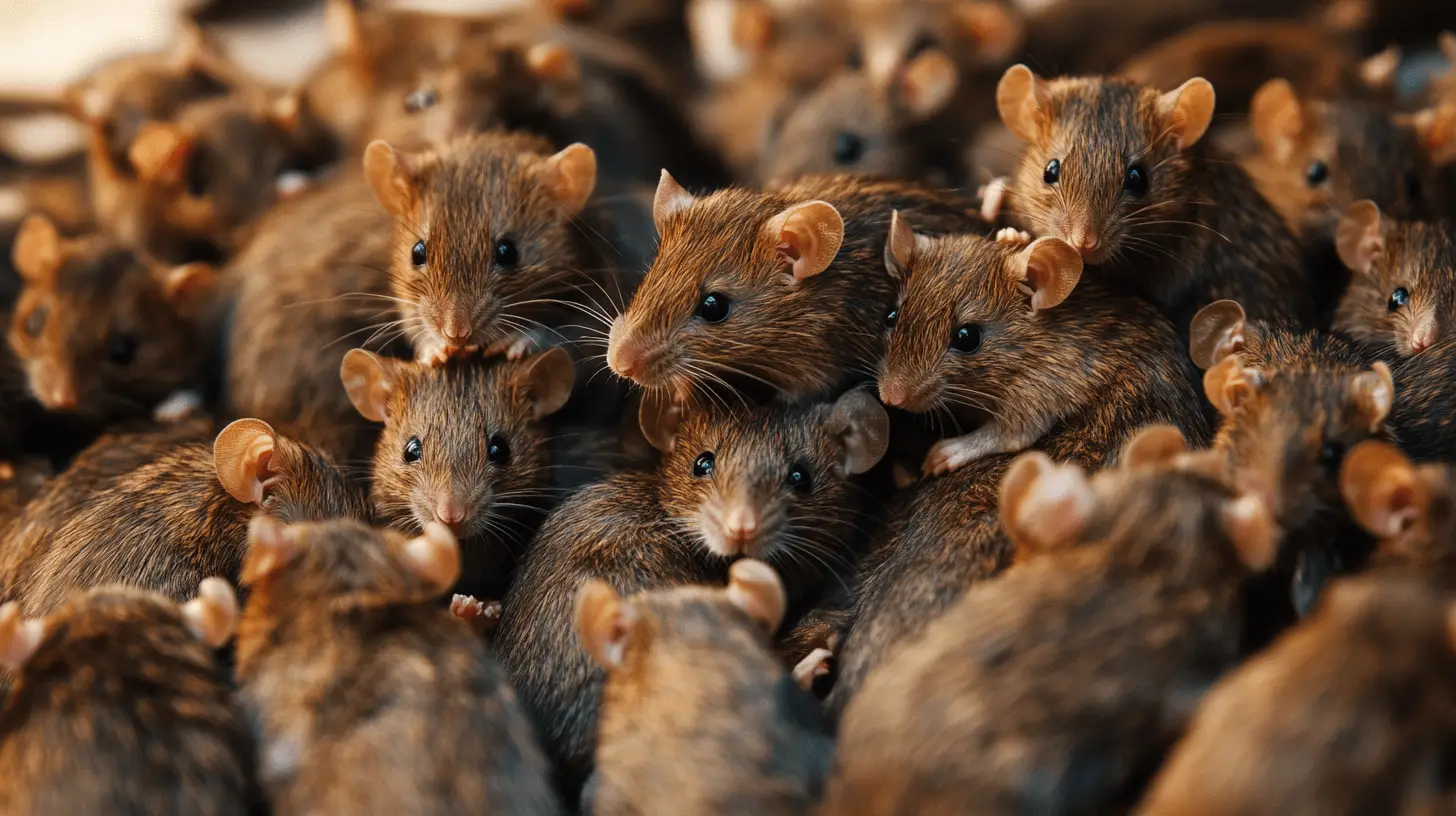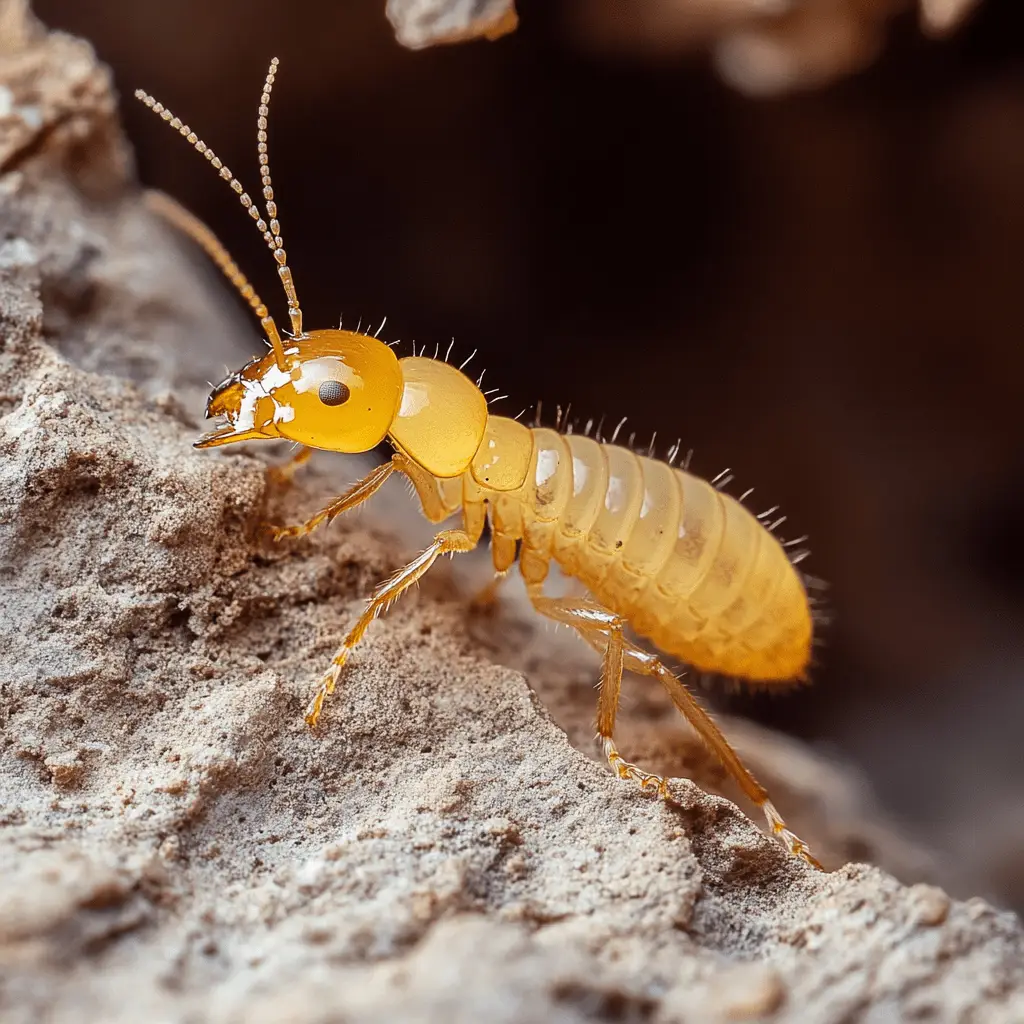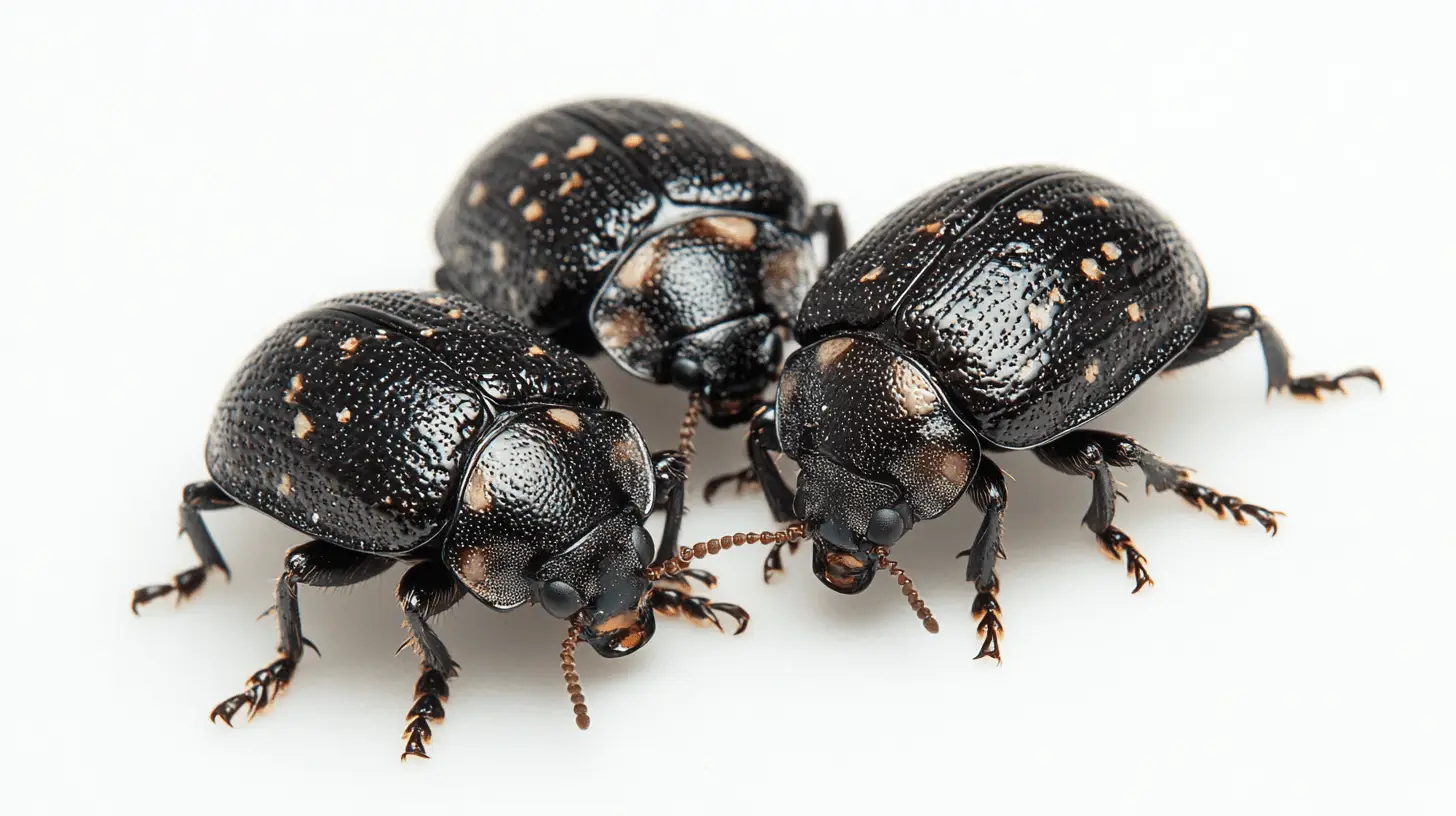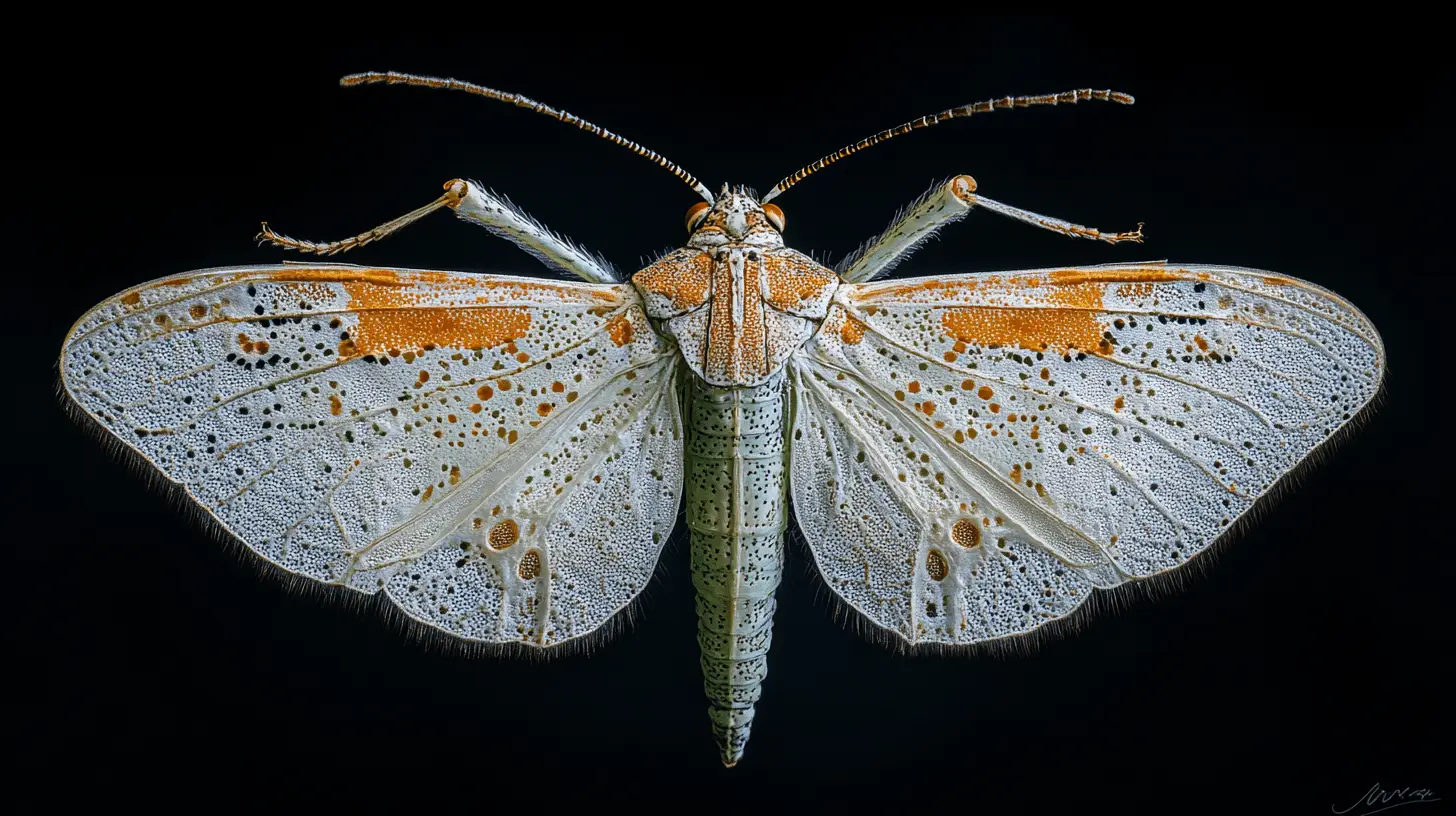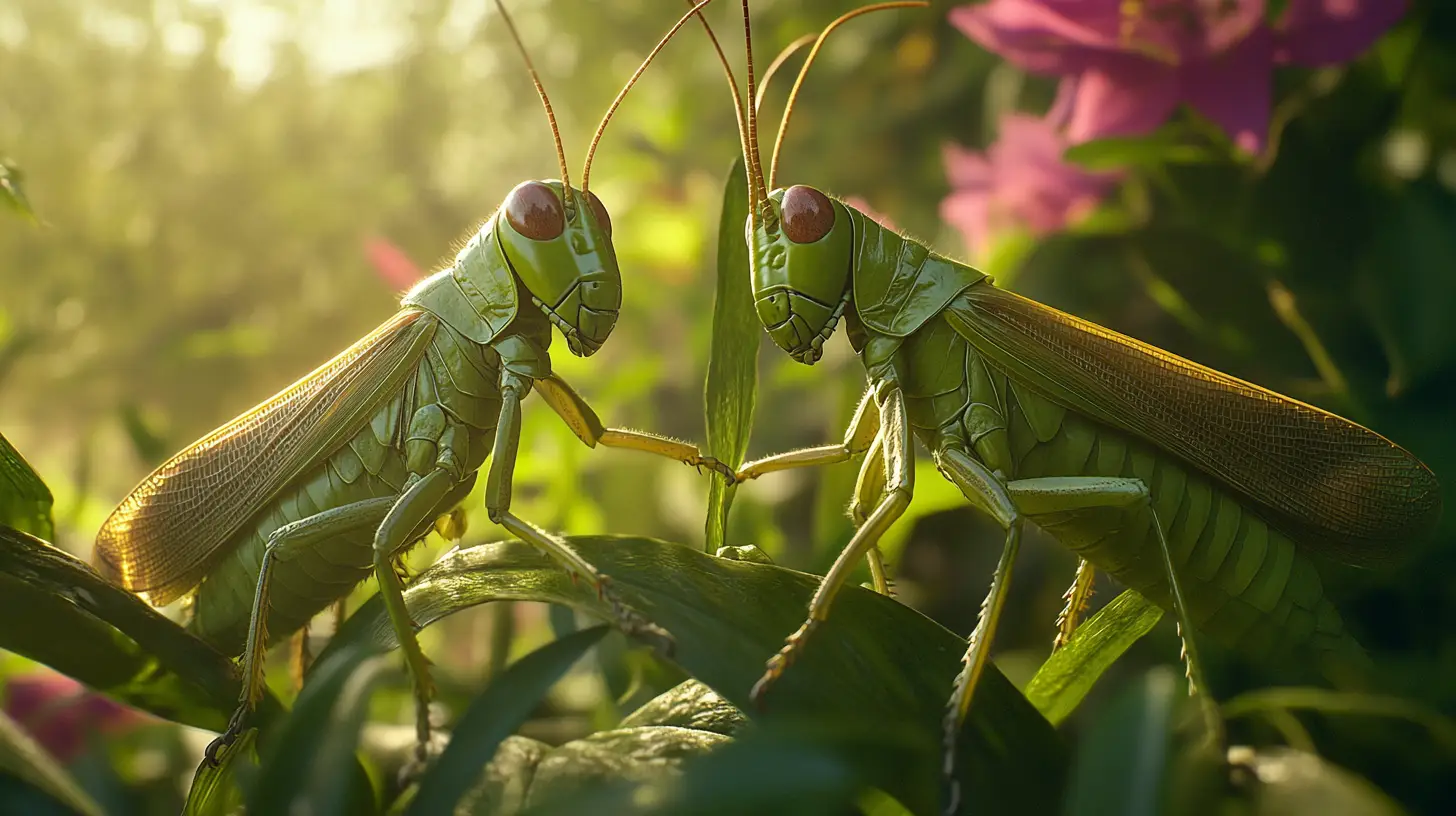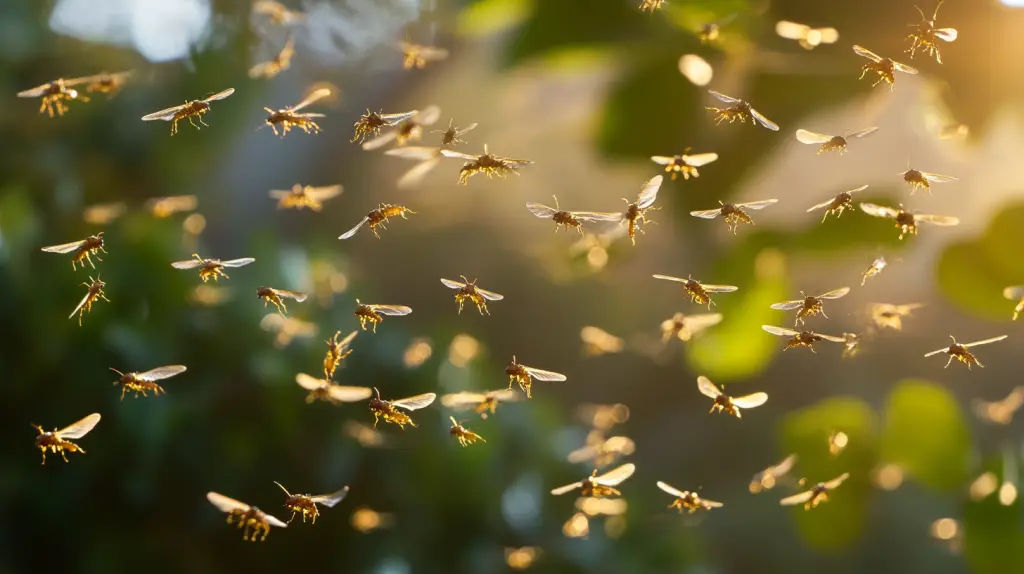
Table of Contents
Did you know that termites have been around for over 250 million years, long before the dinosaurs roamed the earth? These tiny but mighty insects are essential in nature, breaking down dead wood and recycling nutrients, but when they invade homes, they become a homeowner’s worst nightmare. With colonies that can reach millions of members, including soldiers, workers, and long-living queens, termites silently destroy wood from the inside out, often leaving little evidence until the damage becomes severe. Their ability to build mud tubes, survive inside dry wood, and even chew through plastic and electrical wiring makes them one of the most destructive pests to manage.
From Formosan “super termites” that ravage structures quickly to drywood termites that live entirely inside wood, Florida’s warm climate provides an ideal environment for multiple termite species to thrive. Swarms of winged alates appear in the spring, signaling the start of new colonies, and without swift intervention, termites can cause thousands of dollars in damage—much of which isn’t covered by insurance. Understanding termite behavior is key to preventing infestations.
If you want to get rid of termites effectively, it takes a combination of early detection, proper treatments, and preventative strategies. In this guide, we’ll walk you through everything you need to know to keep these silent destroyers from turning your home into their next feast.
Key Takeaways
- Termites can cause severe structural damage if left unchecked, making early detection and elimination crucial.
- Florida’s climate supports various termite species, including Subterranean, Drywood, Dampwood, and Formosan Termites.
- Preventative measures such as keeping wood off the ground, managing moisture, careful use of mulch, and regular inspections can help prevent infestations.
- Key indicators of termite activity include presence of swarmers or discarded wings, mud tubes, wood damage, uneven/bubbling paint, and frass.
- Utilizing natural remedies and professional treatments can aid in effectively eliminating termites from your home.
Common Termites in Florida
Parrish’s climate makes it a hotspot for various termite species. Understanding the types you’re dealing with can help you better get rid of termites in your home.
Subterranean Termites
Subterranean Termites (Reticulitermes spp.) are among the most destructive wood-eating insects in Florida, causing billions of dollars in property damage annually across the U.S. These termites live in underground colonies and build intricate mud tubes to travel from the soil to wooden structures. They rely on moisture from the soil to survive, making them particularly attracted to damp or water-damaged wood. A single colony can house hundreds of thousands to millions of termites, including a queen that can lay thousands of eggs each day.
Subterranean termites are known for their silent destruction—they consume wood from the inside out, often leaving just a thin outer layer intact, which makes infestations difficult to detect until significant damage has occurred. Unlike drywood termites, subterranean termites need constant access to moisture, so they build mud tunnels to protect themselves from dehydration as they move between their nest and food sources.
These termites can form satellite colonies in multiple locations, spreading their destructive potential across wide areas. They are active year-round in Florida’s warm climate but typically swarm in the spring, when reproductive termites (alates) leave the nest to start new colonies. During this time, homeowners may notice discarded wings near windows or doors, a telltale sign of termite activity.
Control methods for subterranean termites include bait stations placed around the property and liquid termiticides injected into the soil to create a chemical barrier. Because these termites are so adept at hiding, early detection and routine inspections are essential to prevent severe structural damage.
Eastern Subterranean Termites Guide
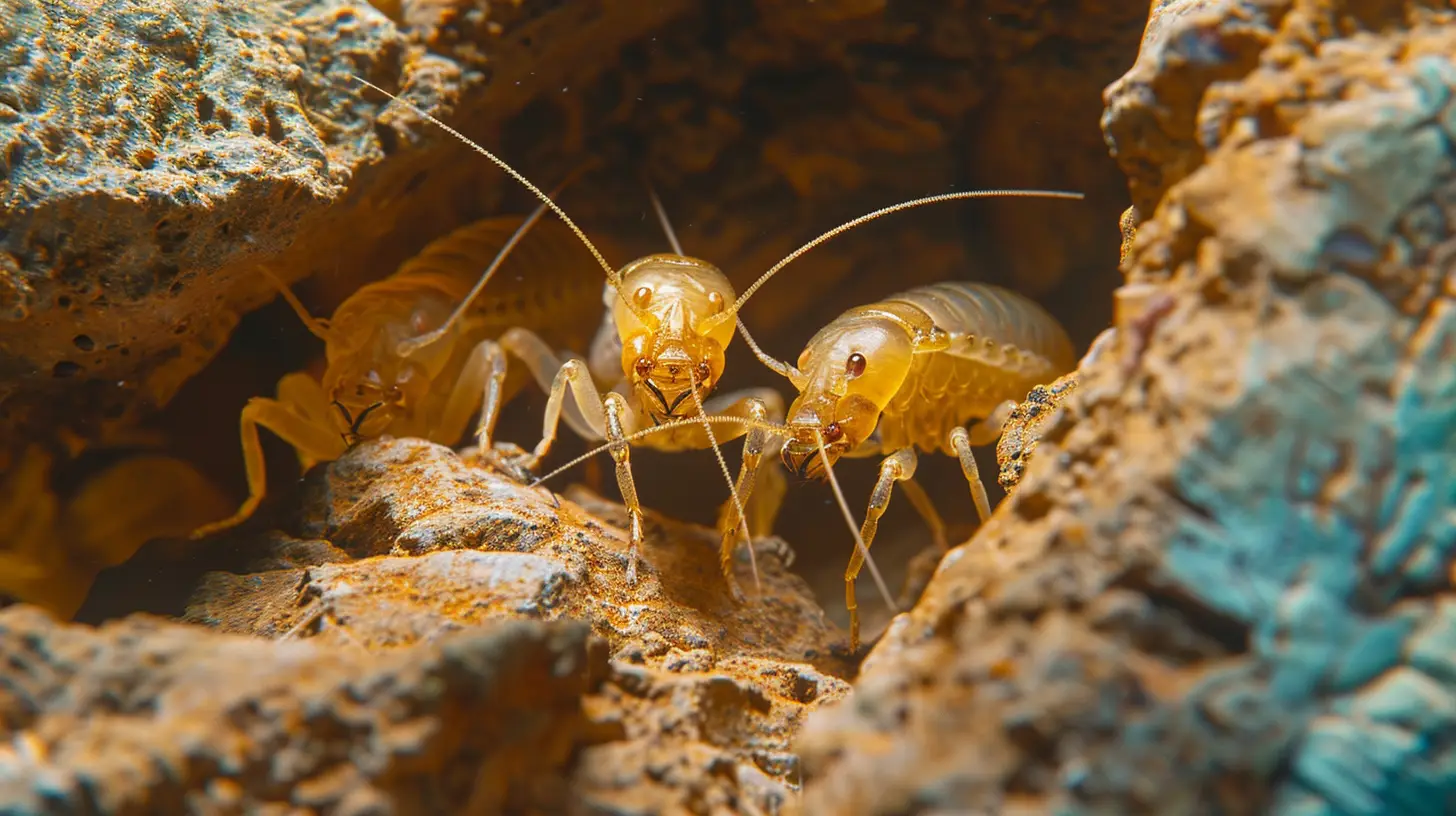
Category: Insects, Wood-Destroying Pests
Size: ¼ to ½ inch long
Color: Alates are dark brown to black; workers are cream-colored
Key Features: Winged alates have two pairs of equal-length wings; soldiers have large mandibles and brownish heads.
Behavior & Habitat:
- Colonies underground, using mud tubes for food access.
- Favor moist areas, feeding on wood and cellulose materials.
- Swarm from February to April; colonies can have thousands to millions of termites.
Life Cycle: Egg → nymph → adult. The queen lays thousands of eggs annually; nymphs develop into workers, soldiers, or reproductives.
Signs of Infestation:
- Mud tubes on foundations or walls.
- Winged termites swarming near windows or sinks.
- Damaged wood with a layered look and soil-filled tunnels.
Control Tips:
- Reduce moisture around the foundation.
- Seal gaps in foundations, doors, and windows.
- Remove wood debris from near structures.
- Call a professional for severe infestations.
Eastern subterranean termites can cause significant damage—early detection and proper management are essential for protection.
Drywood Termites
Drywood Termites Drywood termites (Cryptotermes spp.) are a major pest in Florida, known for their ability to infest and destroy wooden structures without needing soil contact. Unlike subterranean termites, drywood termites live entirely within the wood they consume, creating extensive networks of galleries. They target furniture, wooden beams, flooring, and even picture frames, making them a serious threat to homes and buildings. Because they don’t rely on moisture from the soil, drywood termites can thrive in dry conditions, which makes their infestations harder to predict and control.
One of the most noticeable signs of a drywood termite infestation is the presence of pellet-like droppings, known as frass, which the termites push out of their tunnels through tiny holes. These pellets often accumulate near windowsills, door frames, or baseboards. Swarming occurs primarily in the summer and early fall when reproductive termites, called alates, leave the colony to form new nests. Homeowners may notice discarded wings near windows as a result of these swarms.
Drywood termites are slow but persistent eaters, meaning damage may not be immediately noticeable but can accumulate over time. Unlike subterranean termites, they do not build mud tubes and typically remain hidden within wood until the infestation becomes severe. Treatment methods often require fumigation or localized wood treatments to eliminate the colonies. Regular inspections and preventive maintenance are crucial, especially in coastal and tropical regions like Florida, where drywood termites are most active.
Drywood Termites Overview
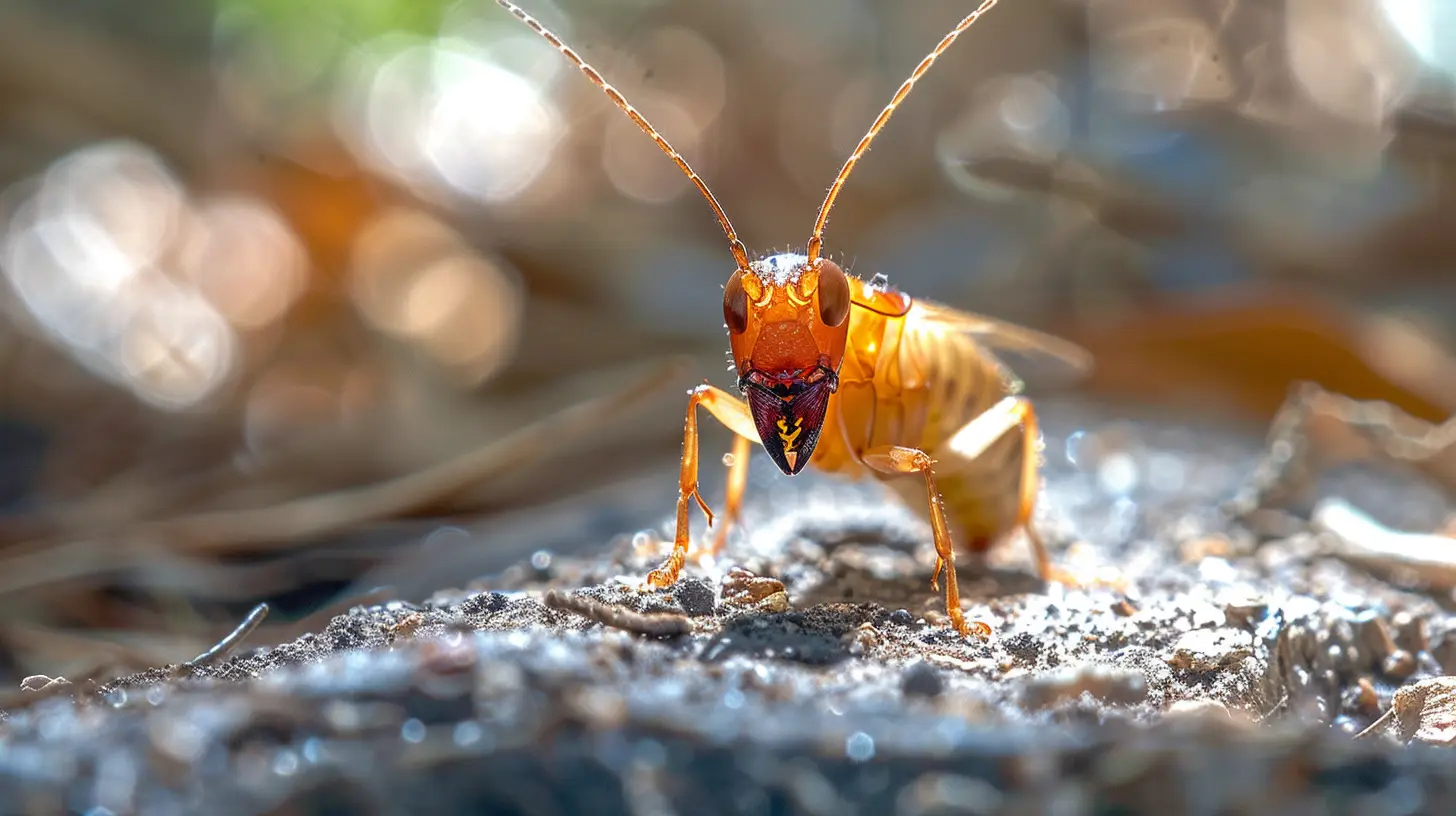
Category: Insects, Wood-Infesting Pests
Size: ⅜ to 1 inch long
Color: Creamy white to light brown
Features: Long, narrow body; soldiers have large mandibles; reproductives have two pairs of equal-length wings.
Behavior & Habitat:
Signs of Infestation:
- Piles of fecal pellets (frass) resembling sawdust or coffee grounds.
- Small kick-out holes in wood.
- Discarded wings near windows or lights after swarms.
- Hollow sound when tapping on infested wood.
- Blistered or warped wood surfaces.
Damage & Impact: Eat both with and against wood grain, causing smooth galleries, often leaving only a thin painted layer behind.
Prevention Tips:
- Seal cracks and crevices in buildings.
- Store firewood away from buildings.
- Schedule regular professional inspections.
- Professional treatment required for established infestations.
Early detection and professional treatment are crucial to prevent significant structural damage.
Dampwood Termites
Dampwood Termites (Neotermes spp.) are one of the largest termite species found in Florida and are known for their preference for water-damaged or decaying wood. Unlike subterranean termites, dampwood termites do not require soil contact but thrive in wood with high moisture content. They are typically found in rotting logs, stumps, fallen trees, and wooden structures with persistent moisture problems, such as leaky roofs, plumbing issues, or poorly ventilated areas.
Because of their need for high humidity, dampwood termites are more commonly found outdoors in humid climates, making Florida’s environment ideal for them. These termites do not create mud tubes like subterranean termites, as they prefer to live entirely within the wood they consume. Their colonies are relatively smaller than those of other termite species, but they can still cause significant damage over time, especially if water issues are not addressed.
Dampwood termites are often detected by the smooth, clean galleries they leave behind inside wood, which differ from the dirt-filled tunnels of subterranean termites. Homeowners might also notice large, winged alates swarming during the rainy season, signaling the presence of a colony nearby. Because dampwood termites need moisture to survive, the key to controlling them is fixing water leaks and improving ventilation to eliminate their ideal conditions. Treatment usually involves removing infested wood and applying localized termiticides to prevent further infestations.
Dampwood Termites Overview
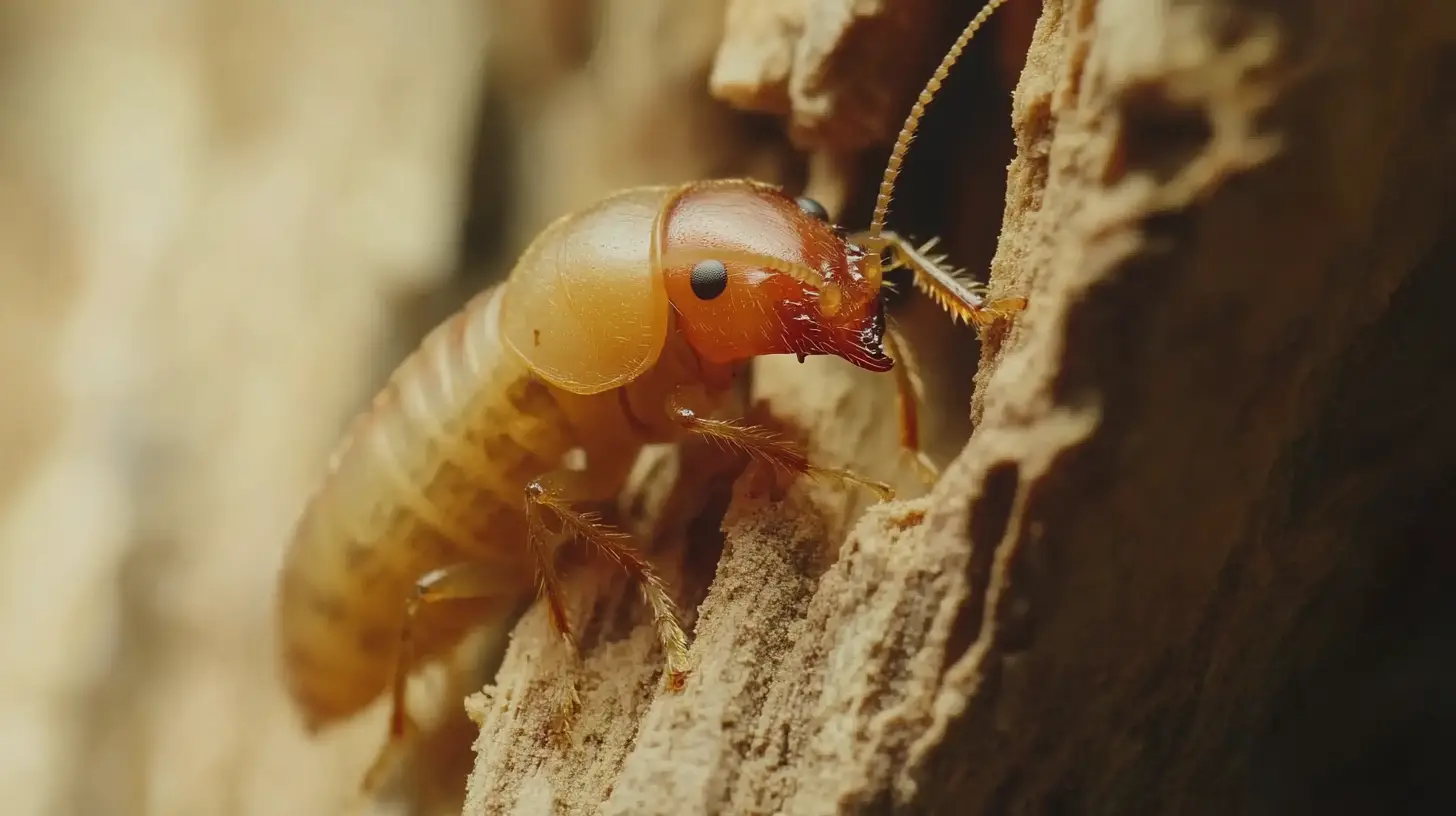
Category: Insects, Moisture-Loving Pests
Size: ½ to ⅝ inch long
Color: Creamy white to brownish
Distinctive Features: Soldiers have large heads with prominent mandibles.
Behavior & Habitat:
- Thrive in damp, decaying wood with high moisture content (logs, stumps).
- Form small colonies, including reproductives, soldiers, and nymphs.
- Nymphs perform tasks instead of a dedicated worker caste.
- Build smooth tunnels, resembling sandpapered surfaces; no mud tubes.
Signs of Infestation:
- Small fecal pellets resembling sawdust.
- Winged reproductives (swarmers) during late summer or fall.
- Soft or hollow-sounding wood when tapped.
Damage & Impact: Dampwood termites hollow out wood, often indicating moisture problems that need fixing.
Control Tips:
- Eliminate moisture by fixing leaks and improving ventilation.
- Store firewood away from structures and remove dead trees or stumps.
- Schedule regular professional inspections for early detection.
Moisture control is key to preventing dampwood termite damage—act early to protect your home.
Formosan Termites
Formosan Termites (Coptotermes formosanus) are among the most aggressive and destructive termite species in the world, often referred to as the “super termites.” Native to Asia, they were introduced to the U.S. through shipping routes and have since established large populations in Florida. What sets Formosan termites apart is their ability to form massive colonies with millions of individuals, causing severe structural damage in a relatively short amount of time.
These termites typically build subterranean nests but can also create aerial nests inside structures if they have access to moisture. Formosan termites are capable of chewing through not only wood but also softer metals, plastics, and even asphalt, making them a serious threat to buildings, boats, and utility poles. They construct extensive mud tubes to travel from the ground to their food sources and hollow out wood from the inside, leaving only a thin exterior that hides the damage until it becomes critical.
Formosan termite colonies contain multiple queens, allowing them to reproduce rapidly and making infestations challenging to control. During the swarming season, typically in late spring or early summer, reproductive termites (alates) leave the colony to establish new nests, often noticeable by the discarded wings near light sources. Their resilience and adaptability mean that once they infest a property, early detection and professional treatment—including baits, chemical barriers, and fumigation—are essential to prevent extensive damage.
Formosan Termites Overview
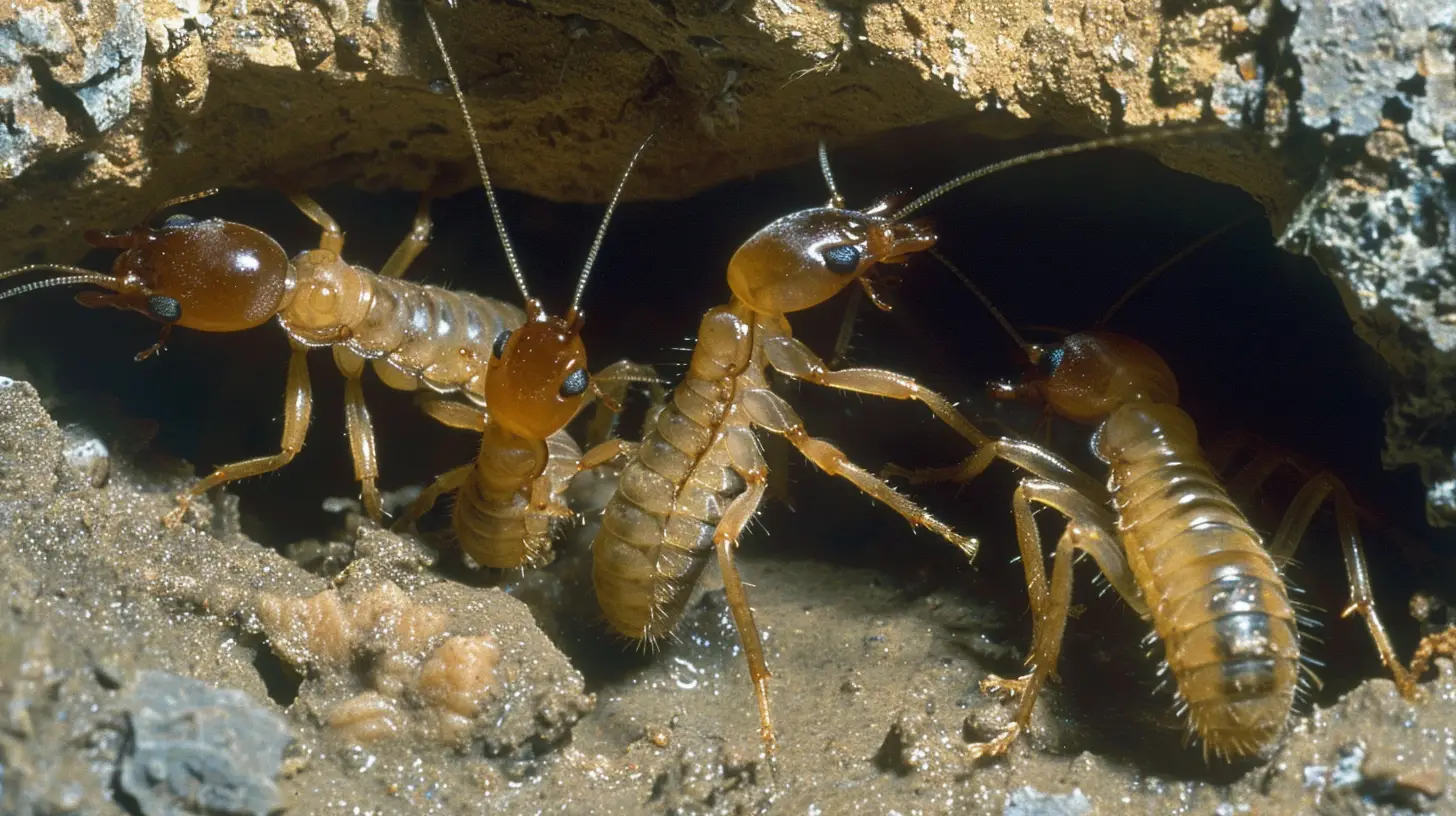
Category: Insects, Aggressive Termites
Size: ½ to ⅝ inch long
Color: Alates are yellowish-brown; workers are creamy white to brown.
Distinctive Features: Soldiers have oval heads with powerful, crossing mandibles; alates have wings covered with small hairs.
Behavior & Habitat:
- Form massive colonies with millions of termites.
- Build underground tunnel systems and mud tubes, and create above-ground “carton” nests.
- Swarm at night in late spring/early summer, attracted to lights.
- Aggressive soldiers make up 5-10% of the colony.
Signs of Infestation:
- Presence of winged swarmers or their shed wings.
- Visible mud tubes on foundations or walls.
- Damaged or hollow-sounding wood.
- Carton nests detectable with moisture meters.
Damage & Impact: Formosan termites are among the most destructive species, capable of causing rapid structural damage. They can chew through non-cellulose materials like plaster and thin metal.
Control Tips:
- Eliminate moisture sources and wood-to-ground contact.
- Schedule regular professional inspections.
- Professional treatment is often necessary for effective control.
Formosan termites are a significant threat—early detection and professional help are crucial for protection.
By identifying the exact termite types common in Florida and understanding their behaviors, you can more effectively carry out strategies to get rid of termites from your property.
How do you prevent a termite infestation?
Ensure Proper Wood Contact
Make sure wood structures don’t touch the ground. This includes decks, fences, and other wooden elements around your home in Parrish. Keeping wood off the ground reduces the likelihood of termites migrating from the soil to the wood.
- Manage Moisture: Avoid water build-up near your home’s foundation. Termites are attracted to moisture, so ensure good drainage and fix any leaks. Keeping the area around your home’s foundation dry and well-ventilated reduces termite attraction.
- Mulch and Landscaping: Be cautious with mulch near your home. Mulch retains moisture and can attract termites. Keep mulch at least a few feet away from the foundation.
- Regular Inspections: Conduct regular termite inspections for signs of termite activity, like mud tubes, discarded wings, or damaged wood. Catching termite activity early can help you get rid of termites before they cause important damage.
In Parrish, termites are notably active due to the warm climate. Implementing these strategies ensures a termite-free environment and protects your home from future infestations.
How to Detect a Termite Infestation
Detecting a termite infestation early is crucial to protecting your home in Parrish from extensive damage. Here are some key signs to watch for:
Swarmers or Discarded Wings
One of the most visible indicators of termites is the presence of flying swarmers, often seen near windows, doors, or light sources. After swarming, these termites shed their wings, leaving piles resembling fish scales. Finding these discarded wings in or around your home typically signals a nearby colony.
Mud Tubes
Subterranean termites build mud tubes on foundations and crawl-space walls. These pencil-thick to inch-wide tunnels protect termites as they travel between their nest and food source. Breaking open these tubes can reveal cream-colored insects, confirming an active infestation.
Wood Damage
Termites often leave behind wood that sounds hollow when tapped. Look for blistered or darkened sections of wood that break easily when pressed. This kind of damage usually signifies termites have been feeding internally, compromising the structural integrity of your home.
Uneven or Bubbling Paint
Uneven or bubbling paint on walls can be a sign of termites. This happens when termites create moisture by tunneling and nesting within the walls, causing the paint to blister. If noticed, it’s advisable to further inspect for other signs of termite activity.
Frass
Frass, or termite droppings, is another indicator of termite infestation, particularly from Drywood termites. These small, wood-colored pellets accumulate below infested wood, looking like sawdust. Finding frass near wooden structures often means termites are nesting inside.
By understanding and identifying these signs, homeowners in Parrish can detect a termite infestation early and take steps to get rid of termites before they cause severe damage.
Termite Treatment Solutions
Taking proactive steps to manage and prevent termite infestations is essential for protecting your home. By understanding the different types of termites and their behaviors, you can carry out effective strategies to keep these pests at bay. Regular termite inspections and preventive measures are key to maintaining a termite-free environment.
Don’t hesitate to seek professional help if you suspect an infestation. Experts can provide thorough inspections and targeted termite treatments that ensure your home remains safe and sound. Stay vigilant and informed to safeguard your investment from the destructive power of termites.
Frequently Asked Questions (FAQs)
How do I know if I have termites in my home?
Signs of a termite infestation include:
- Mud tubes on walls or foundations (subterranean termites)
- Discarded wings near windows and doors (swarming termites)
- Frass (termite droppings) that look like small pellets (drywood termites)
- Hollow-sounding wood or blistered floors
- Sagging wood or bubbling paint, indicating internal damage
If you notice any of these signs, it’s time to act quickly.
What attracts termites to my home?
Termites are drawn to:
- Moisture, such as leaky pipes or poorly ventilated areas
- Wood-to-soil contact, like wooden fences or decks touching the ground
- Mulch and firewood, which offer both shelter and food
- Structural wood, especially if it’s damaged or decaying
Reducing these factors can help prevent infestations.
What are the best ways to get rid of termites?
The most effective termite treatments include:
- Bait stations: Baits attract termites and poison the entire colony, including the queen.
- Liquid termiticides: These chemicals form a barrier around your home to repel or kill termites.
- Fumigation: For severe drywood termite infestations, fumigation is often necessary.
- Wood treatments: Borate solutions and other chemicals can be applied to protect wood from future infestations.
Combining these methods increases the chances of eliminating termites for good.
How long does it take to get rid of termites?
Termite treatments can take several weeks to months, depending on the size of the infestation and the treatment used. Bait stations may take a few months to eliminate a colony, while fumigation can be effective within a few days.
Can I get rid of termites myself, or do I need a professional?
While there are DIY products available, termite infestations are often complex and difficult to manage alone. Hiring a licensed pest control professional is recommended for large or persistent infestations to ensure the termites are fully eradicated.
What is the difference between drywood termites and subterranean termites?
- Drywood termites live entirely inside wood and don’t need soil contact to survive. They’re often found in furniture, beams, and attic spaces.
- Subterranean termites require soil moisture and build mud tubes to connect their underground nests to wood structures. They are more common and cause the most damage in Florida.
How can I prevent termites from coming back?
To prevent termites from reinfesting:
- Fix leaky pipes and gutters to reduce moisture.
- Ensure good ventilation in crawl spaces and attics.
- Remove wood debris and keep mulch or firewood away from the foundation.
- Use termite-resistant materials during home renovations.
- Schedule annual termite inspections with a pest control professional.
Do termite infestations cause serious damage?
Yes, termites can cause severe structural damage by eating wood from the inside out. In the U.S., termites cause approximately $5 billion in damage annually, and most homeowner insurance policies do not cover termite damage.
What time of year are termites most active?
Termites are most active during the spring and summer when they swarm to establish new colonies. However, in warm climates like Florida, termites can remain active year-round.
Are termites dangerous to humans?
While termites don’t bite or spread diseases, their presence can cause significant damage to homes. Additionally, termite infestations can trigger allergies or worsen asthma by increasing dust and mold levels.
Can termites infest concrete homes?
Yes, even though termites don’t eat concrete, they can penetrate through cracks or build mud tubes to reach wood inside concrete or brick structures.
What should I do if I see a termite swarm?
If you see a swarm, it’s a sign that termites are nearby. Don’t panic—contact a pest control professional for an inspection, as the swarmers may indicate the start of a new colony.
How expensive is termite treatment?
Termite treatment costs vary based on the size of the infestation and the method used. Bait stations and liquid termiticides can cost a few hundred dollars, while fumigation or extensive repairs may run into thousands of dollars.
Does fumigation get rid of all termites?
Fumigation is highly effective for drywood termites but doesn’t work on subterranean termites, which live in the soil. For subterranean termites, baits or liquid termiticides are more effective.
How often should I have my home inspected for termites?
It’s recommended to schedule annual termite inspections, especially if you live in areas like Florida where termites are common. Regular inspections can catch infestations early, preventing costly damage.
What’s the most effective way to get rid of termites in Florida?
Given Florida’s climate, liquid termiticides and bait systems are often the most effective treatments for subterranean termites, while fumigation is recommended for drywood termite infestations. Combining these treatments with preventative measures is the best way to get rid of termites and keep them from coming back.




